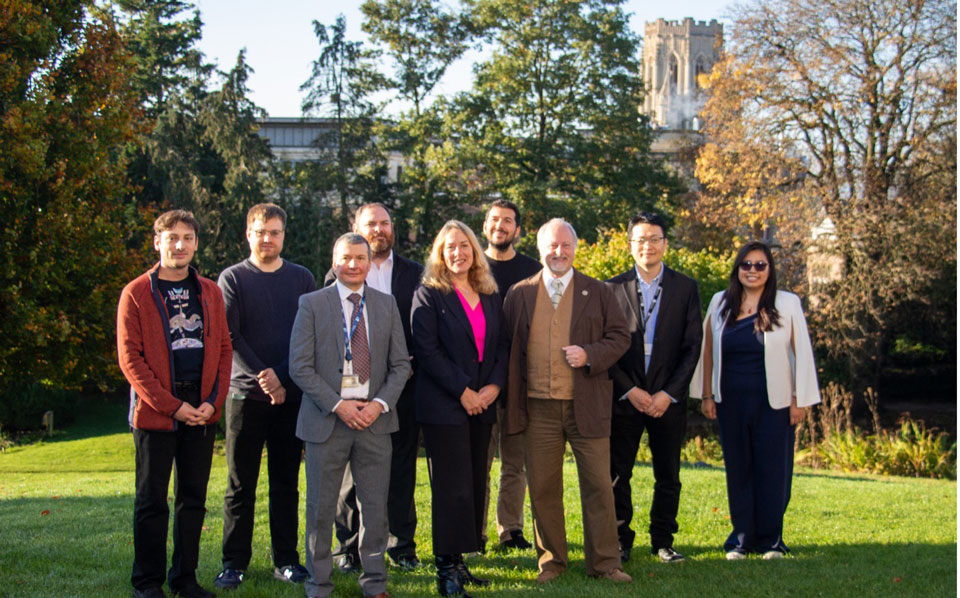News and Events
- Successful Demonstration of Hydrogen Innovation: RESR Technology Showcased on a Live Film Set
- Professor Fengzhou Fang was awarded a Prestigious Honorary Doctorate
- Dr Anna M Kelly, Appointed to the Fáilte Ireland Authority
- CDIC Automotive Design Competition 2024
- Aisling Ní Annaidh recognised as a pioneer in her field through an ERC Consolidator Award
- Scientists’ next-generation space materials blast off for tests on ISS
- SFI Industry RD&I Fellowships announced
- Inclusive XR 1.5 days Training Workshop: 17-18 June 2024
- ISRP symposium
- UCD-led space project receives over €7.9m from Disruptive Technologies Innovation Fund
- UCD Researchers awarded over €4m in ERC grants for Biomedical Engineering and Political Economy projects
- Congratulations to Xinhui Wang win the first prizes at the 26th Sir Bernard Crossland Symposium in all-Ireland (Republic of Ireland + Northern Ireland)
- ERC Starting Grants Awarded to UCD Researchers in Humanities and Engineering
- UCD's Livija Vasilenkaite - First Prize Winner #ThisIsEngineering2023
- College researchers recognised in UCD Research Impact Competition
- UCD Graduate Clíodhna Lyons named Automotive News Europe Rising Star
- Irish Government invests in 47 projects to engage and inspire the public about STEM
- Research to Literally Get Under the Skin of Things
- IMI project Screen4Care to speed up diagnosis and enhance healthcare for rare disease patients
- €9M joint investment for US-Ireland R&D Programme
- Helping People Understand and Mitigate the Spread of Aerosol-Born Infections
- Research teams chosen to find disruptive ideas for Irish Defence Forces
- Reducing the operational requirements of wind turbines with real-time downtime detection
- 2021 Archive
- 2020 Archive
- 2019 Archive
- 2018 Archive
- 2017 Archive
- 2016 Archive
Scientists’ next-generation space materials blast off for tests on ISS
Tuesday, 5 November, 2024

UCD’S Prof Kate Robson Brown among team launching low Earth orbit experiments to test materials to build future space stations or spacecraft for interplanetary travel.
A new generation of space materials left Earth this morning as they head to the International Space Station (ISS) to undergo testing in the brutal conditions of low Earth orbit. Developed at the University of Bristol, these high-performance materials could be used to build future space stations, spacecraft for interplanetary travel or a new ISS.
They will be placed on the Bartolomeo platform, located on the front of the ISS, where they will orbit Earth up to 9,000 times over the next 12 to 18 months at speeds of 17,000 mph. The carbon fibre reinforced composites will need to survive temperatures between -150ºC and +120ºC, space debris travelling seven times faster than a bullet, severe electromagnetic radiation, high vacuum and atomic oxygen, which erodes even the toughest materials.
Leading the project, Professor Ian Hamerton, Professor of Polymers and Sustainable Composites in the University of Bristol’s world-leading Bristol Composites Institute, said: “Space is the most challenging environment for which to design new materials. You’re pitting your materials expertise, skills and ingenuity against extremes of temperature, mechanical stress, radiation, high speed impacts and more. Any one of those might be difficult, and, unfortunately, gaining access to repair them is not an easy option, so the materials we build must survive without maintenance. The opportunity to test our materials in the proving ground of space is priceless and will help our University of Bristol scientists on the ground improve fibre-reinforced materials for next-generation space missions.”
During the campaign, real-time mass loss data will be collected to assess how the materials perform, and these will be used to validate analytical models currently being developed within a PhD project to predict the lifetime of composites deployed in LEO.
Professor Kate Robson Brown, formerly University of Bristol and now Professor at UCD School Mechanical and Materials Engineering and UCD Vice-President for Research, Innovation and Impact, leads the development of these computational models. She commented: “After nearly five years of research to develop novel composite materials for space applications it is very exciting to see our experiment launch to the International Space Station.
“I am proud to be part of this mission, and to be working with the mulltidisciplinary and multisector research team to deliver integrated real world and digital testing for innovative materials which will help to drive growth in the new space economy. This mission also demonstrates how space research funding creates career changing opportunities for early career researchers and PhD students in a sector of huge value to both Ireland and the UK.”
After a year or more of exposure in space, the samples will be returned to Earth, allowing the scientists to thoroughly investigate and fully understand the effects of the space environment on the materials and validate the newly-developed predictive models.
The launch represents the culmination of over four years of intensive research to develop new materials for the space environment as part of the European Space Agency’s (ESA) Euro Materials Ageing (EMA) mission. BCI was one of 15 teams selected for the project after a rigorous multi-stage peer review process. The EMA experimental platform (SESAME - Scientific Exploration Subsurface Access Mechanism for Europa), developed by the French Space Agency (CNES) and manufactured by COMAT, will be deployed by a robotic arm on the Bartolomeo platform(opens in a new window)designed and operated by Airbus, which is located on the front of the ISS.